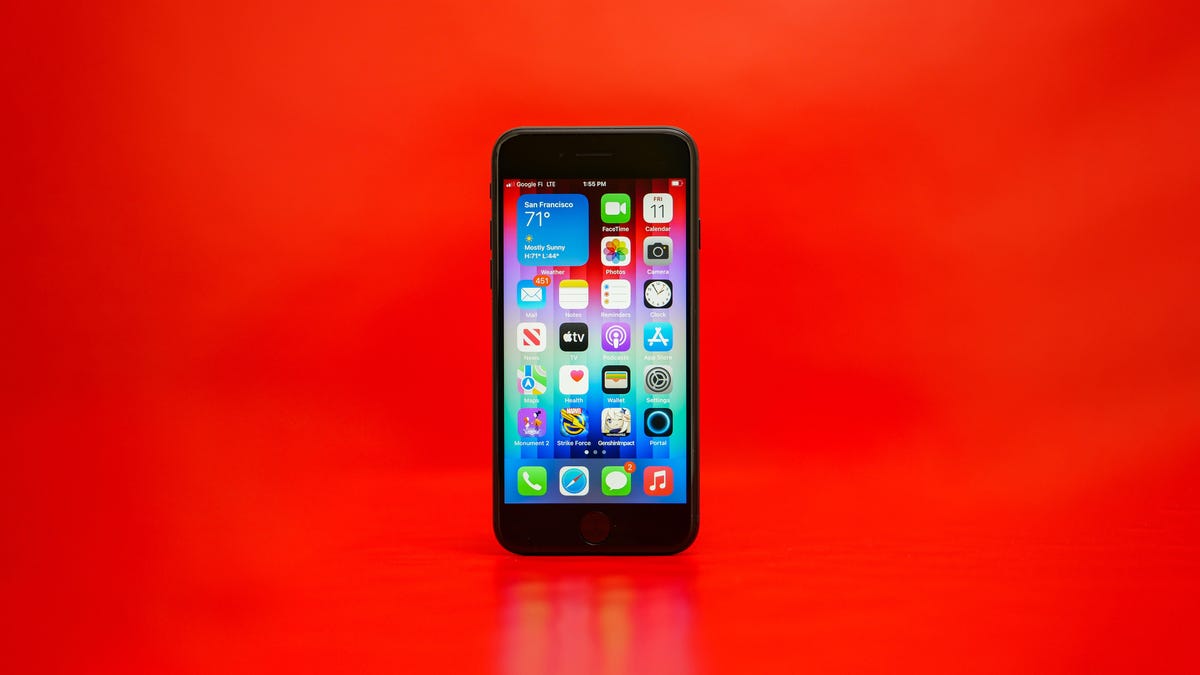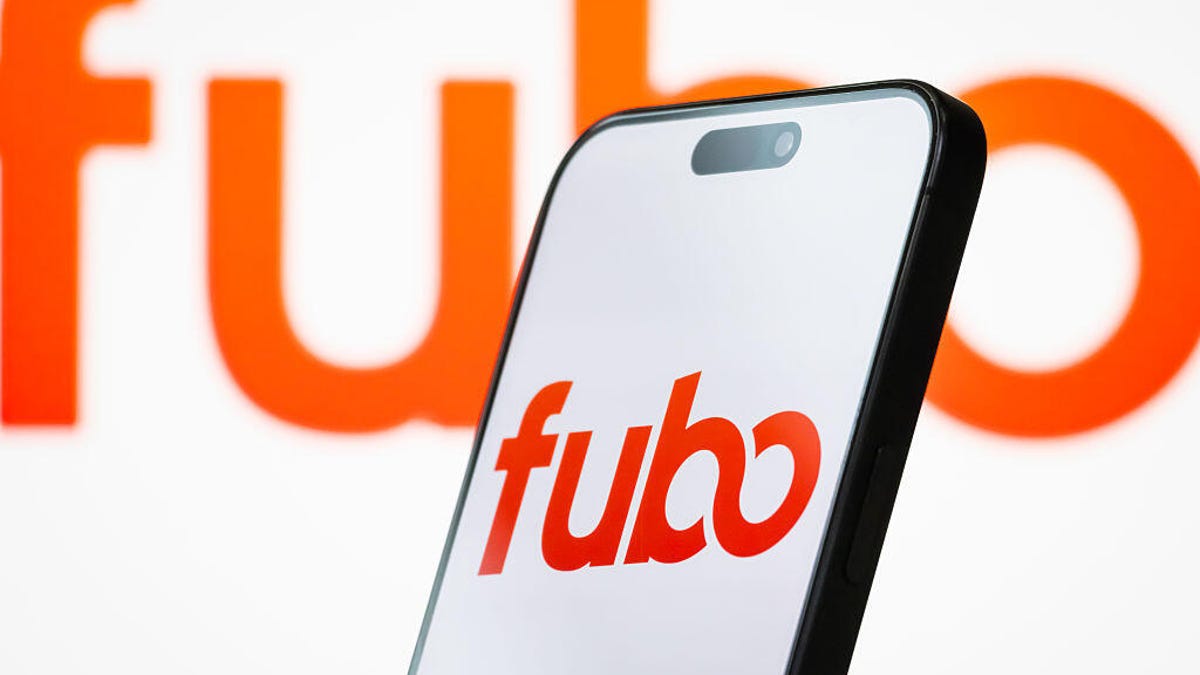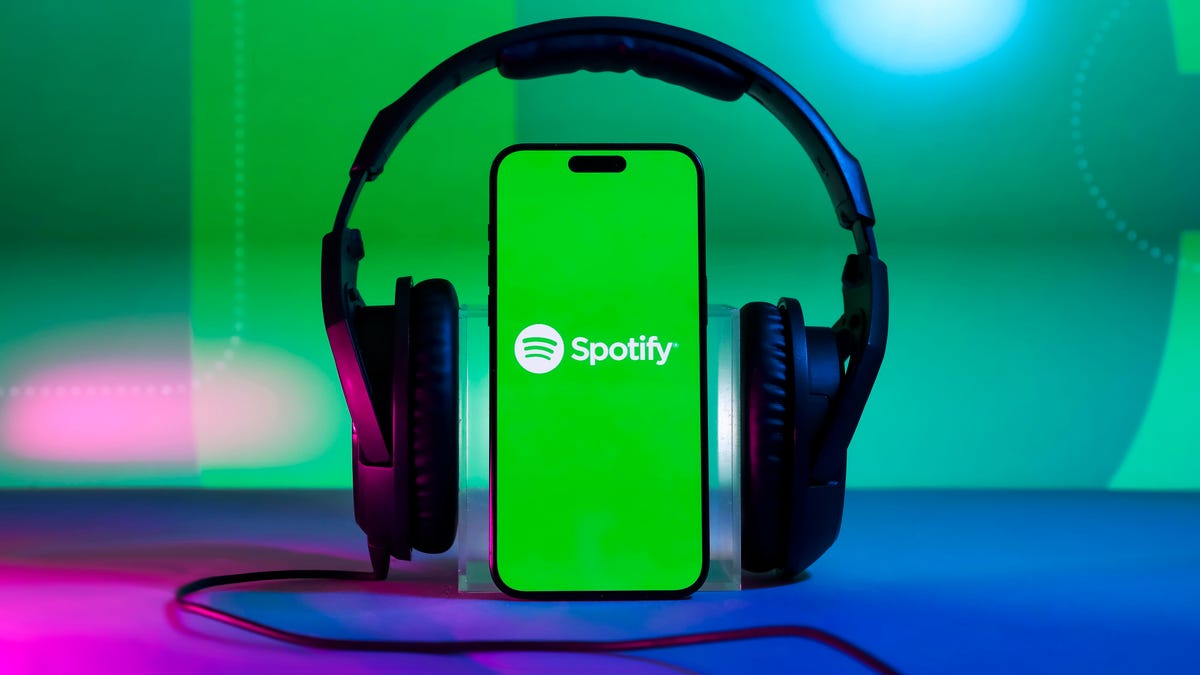Technologies
The 2024 iPhone SE 4 May Already Be Canceled
As its Pro line rises in popularity, Apple may forget about its budget option.

If you could get the same performance as an iPhone 14 for roughly half the price, wouldn’t you think it was worth getting? According to analyst Ming-Chi Kuo, Apple may scrap the next version of its wallet-friendly iPhone SE, which was expected to arrive next year.
«The supply chain has received instructions from Apple indicating that the production and shipment plans for the 2024 iPhone SE 4 have been canceled rather than delayed,» Kuo wrote in a Medium post on Jan. 6.
If Kuo’s predictions are correct, only Apple knows the reasoning behind the cancellation. But research and media reports suggest there may be a very simple answer. More expensive iPhone models tend to be more popular, possibly leaving little incentive for Apple to continue pursuing cheaper phones like the iPhone SE.
Apple didn’t respond to CNET’s request for comment.
The third-gen iPhone SE, which debuted in March, starts at $429 and is essentially an iPhone 8 stuffed with the guts of an iPhone 13. CNET’s Patrick Holland called it a «mind-blowing value» in his iPhone SE (2022) review, but he also highlighted missing elements that make it feel dated, like its lack of a full-screen design or night mode for the camera.
Previous generations of the iPhone SE took a similar approach; the 2020 version essentially had the same design but had the iPhone 11’s chip. The 2016 model had the body of an iPhone 5S with the processor of an iPhone 6S. A rumored fourth-gen iPhone SE was expected to adopt a new design similar to the iPhone XR, according to YouTube personality and gadget leaker Jon Prosser.
To understand why Apple may have canceled its next iPhone SE, consider the changes Apple recently made in its iPhone 14 lineup. In a departure from the prior two years, Apple did not release a cheaper «Mini» version of its new flagship iPhone in 2022. Instead, it released a larger version of the regular iPhone 14 called the iPhone 14 Plus, which is $100 more expensive than the regular $799 iPhone 14, raising the barrier to entry for shoppers.
This change followed reports from Nikkei Asian Review and Kuo (via MacRumors) that Apple would scrap the iPhone Mini in 2022, with the former adding that the Mini model didn’t resonate with consumers. Taken together, the elimination of the Mini and reports that next year’s rumored iPhone SE may have been axed could indicate that Apple is pivoting away from releasing smaller, cheaper iPhones.
But Gene Munster, managing partner for tech investment firm Loup and a longtime Apple analyst, doesn’t see it that way. He believes the iPhone SE still plays an important role in Apple’s lineup because of its low price.
«It’s still, I think, the best bang for your buck when it comes to an iPhone,» he said.
Evidence suggests that more expensive iPhones tend to be top sellers, which might help explain the shift. The average selling price of an iPhone rose 7% year over year in the third quarter of 2022, according to Counterpoint Research. The market research firm also reported in June that Apple dominated the global market for premium phones with a 62% share in the first quarter of 2022. It’s important to note that Counterpoint defines premium phones as devices that cost $400 and higher, meaning the third-gen iPhone SE would fall into that category since it starts at $429. The report, however, did say that Apple’s growth in the premium category largely came from the iPhone 13 lineup.
The pricier iPhone 14 Pro and Pro Max also appear to be the stars of Apple’s new smartphone lineup so far. The Information reported that Apple cut production of the iPhone 14 Plus within two weeks of its launch, while research firm Trendforce says Apple boosted production of the iPhone 14 Pro and Pro Max. Kuo also said on Twitter in September that the iPhone 14 Pro Max was responsible for about 60% of Apple’s order increase for the Pro lineup, hinting that Apple’s most expensive new iPhone is also its most popular. A November 2022 report from Wave7 Research also said 38 out of 39 surveyed carrier service representatives said they didn’t have in-store inventory of the iPhone 14 Pro or Pro Max.
The iPhone SE, meanwhile, has only accounted for roughly 5% to 8% of quarterly US iPhone sales over the past two years, said Josh Lowitz of Consumer Intelligence Research Partners. When looking at total volumes for the newest iPhone models in a given year, the Pro versions typically account for 35% to 40% of sales, while the iPhone SE makes up about 20%, according to Munster.
Carrier discounts have also made it easier to snag high-end phones at cheaper prices, especially when trading in an old device, as my colleague Eli Blumenthal pointed out following the iPhone 13’s launch. Many US shoppers also pay for their phones in monthly installment plans through carriers, which can make higher prices easier to swallow. Both of those factors can make the case for buying a less expensive iPhone with fewer features all the more challenging.
«Because you’re paying over such a long period of time … the $100 price difference, or even a $200 price difference, isn’t that much per month,» said Lowitz.
At the same time, Samsung has seen success in the market for lower-priced phones. Its Galaxy A phones, which typically cost hundreds of dollars less than its flagship Galaxy S phones, accounted for 58% of Samsung’s smartphone unit sales in 2021, according to Counterpoint Research data previously provided to CNET. Samsung’s Galaxy A phones have modern features not found on the iPhone SE, such as a camera with multiple lenses and larger screens, although they often run on less powerful processors than Samsung’s pricier phones.
The notion that Apple may have canceled the 2024 iPhone SE raises questions about the future of the SE line in general. Apple extended the SE branding to the Apple Watch in 2020 for the first time and launched a sequel to that product in September.
The fact that Apple had brought the SE line to another product had made it seem like a more permanent fixture in Apple’s lineup. But if Kuo’s insight turns out to be accurate, the iPhone SE’s days may be numbered. And once you take a closer look at how Apple’s smartphone lineup has changed and the data around phone shipments, it’s easy to understand why.
But Munster isn’t convinced that cheaper iPhones like the SE are going away for good. Having a more affordable option makes it easier for Apple to achieve its broader goal of bringing more customers into its web of products and services.
«I think that plays an important role,» he said. «I don’t think Apple’s giving up on that price point.»
Technologies
Fubo Loses NBCUniversal Channels, Putting Your NBA Games in Jeopardy
Sound the carriage dispute Klaxon: Some network programming has disappeared from the streaming service after content negotiations fell through.

If you’ve noticed your favorite show has recently gone missing from Fubo, it’s probably because an entire block of programming just disappeared from the site’s channel lineup.
The live TV streaming service is engaged in a carriage dispute with NBCUniversal, a media company whose subsidiaries include NBC News, Universal Studios, Peacock, Telemundo and Illumination, among other brands.
On Nov. 21, NBCUniversal pulled all of its networks from Fubo. This is an especially big deal for sports watchers on the streaming service, since the Fubo Sports subscription — which began earlier this year — depends on the licensing agreement with NBCUniversal. However, viewers can still access sports content on networks like ESPN, CBS and ABC.
Fubo released a statement on Tuesday, alleging the media giant is engaging in «discriminatory tactics» that are harming the streamer’s subscribers.
«NBCU is discriminating against Fubo and our subscribers,» the statement says. «They allowed YouTube TV and Amazon Prime to integrate Peacock directly into their channel store, but refused to give Fubo the same rights.»
Don’t miss any of our unbiased tech content and lab-based reviews. Add CNET as a preferred Google source.
Fubo says NBCUniversal is trying to force a multiyear deal for certain channel packages under the media giant’s new spin-off media company, Versant, and that it’s trying to upcharge on the Fubo Sports subscription by adding «expensive, non-sports channels» into the agreement, increasing the cost.
According to NBCUniversal’s website, the Versant brands include CNBC, E!, MS Now, SyFy and USA, among other channels.
NBCUniversal did not respond to a request for comment.
Fubo says that it’s willing to move forward without NBCUniversal content if an agreement cannot be reached.
«Fubo is committed to bringing its subscribers a premium, competitively-priced live TV streaming experience with the content they love,» its statement concludes. «That includes multiple content options, including a sports-focused service, that can be accessed directly from the Fubo app.»
Fubo recently became an affiliate of The Walt Disney Company, following its merger with Hulu’s live TV platform in October. It’s unclear whether this merger affected content agreement negotiations with NBCUniversal. Fubo did not respond to a request for comment on this.
Technologies
Spotify Will Reportedly Get More Expensive in the US Next Year. Here’s What to Expect
The music streaming service will reportedly raise prices again after subscription rate hikes in other regions.

After announcing it is raising prices in regions including Europe, South Asia and Latin America, Spotify is reportedly about to increase prices again in the US.
The US is included in the latest Spotify price hike on its Premium services starting in early 2026, according to the Financial Times, which cited three sources familiar with the streaming music company’s dealings. For now, the least expensive Premium plans in the US start at $12, but the price hike would likely put it in line with the other regions where the Premium plan costs about $14 a month.
Don’t miss any of our unbiased tech content and lab-based reviews. Add CNET as a preferred Google source.
Spotify also offers a Premium Family plan that covers six people in the same household for $20 and plans for students ($6 a month bundled with Hulu) and couples ($17 a month). Spotify also offers a Basic plan that does not include access to audiobooks for $11 a month. A representative for Spotify did not immediately respond to a request for comment.
A steady increase
If the report is accurate, this would be the third price increase on Premium plans in the US since 2023. Before those hikes, Premium plans were $10, but Spotify raised its minimum price by $1 in 2023 then again in 2024.
Just this week, Spotify added the ability to seamlessly import playlists from other music services including Apple Music and Tidal.
Spotify has faced some controversy this year, including some music acts abandoning the platform and some customers canceling subscriptions over advertising for Homeland Security’s ICE program. CNET has a guide for canceling your Spotify subscription.
The company is the market leader among music streaming apps with about 32 percent market share as of the end of 2024.
Technologies
Some Rad Power Bike E-Bike Batteries Can Catch Fire, Consumer Protection Agency Warns
The company declined to offer full replacements or refunds, citing financial constraints.

The US Consumer Product Safety Commission is warning that some lithium‑ion batteries used in certain e‑bikes made by Rad Power Bikes pose a serious fire hazard that could lead to injury or even death. The agency says the batteries, identified by model numbers RP‑1304 and HL‑RP‑S1304, can unexpectedly ignite or explode, especially if the battery or its harness has been exposed to water or debris.
The recall has been marked as a «public health and safety finding» because Rad Power Bikes has declined to offer full replacements or refunds for all consumers, citing financial constraints.
CPSC reports 31 incidents of fire involving these batteries, including 12 cases where property damage totaled approximately $734,500. Some of these fires occurred even when the battery was not in use or charging, but was in storage.
Don’t miss any of our unbiased tech content and lab-based reviews. Add CNET as a preferred Google source.
The batteries were sold as either original or replacement units for several Rad Power Bikes e-bike models and were available through RadPowerBikes.com, Best Buy and independent bike shops nationwide.
«Rad informed the agency that its demand to replace all batteries, regardless of condition, would immediately put Rad out of business, which would be of no benefit to our riders,» the company said in a statement issued with the CPSC warning. «Rad is disappointed that it could not reach a resolution that best serves our riders and the industry at large. Rad reminds its customers to inspect batteries before use or charging and immediately stop using batteries that show signs of damage, water ingress, or corrosion, and to contact Rad so we can support our riders.»
The CPSC’s statement does not apply to all Rad batteries, and does not apply to its Safe Shield or semi-integrated batteries.
Consumers who have one of the affected batteries are urged to stop using it immediately and dispose of it properly via a household hazardous‑waste collection center. Do not place the batteries in standard curb-side recycling or trash bins, and refrain from reselling them.
-

 Technologies3 года ago
Technologies3 года agoTech Companies Need to Be Held Accountable for Security, Experts Say
-

 Technologies3 года ago
Technologies3 года agoBest Handheld Game Console in 2023
-

 Technologies3 года ago
Technologies3 года agoTighten Up Your VR Game With the Best Head Straps for Quest 2
-

 Technologies4 года ago
Technologies4 года agoBlack Friday 2021: The best deals on TVs, headphones, kitchenware, and more
-

 Technologies4 года ago
Technologies4 года agoVerum, Wickr and Threema: next generation secured messengers
-

 Technologies4 года ago
Technologies4 года agoGoogle to require vaccinations as Silicon Valley rethinks return-to-office policies
-

 Technologies4 года ago
Technologies4 года agoOlivia Harlan Dekker for Verum Messenger
-

 Technologies4 года ago
Technologies4 года agoiPhone 13 event: How to watch Apple’s big announcement tomorrow
